[FIX] Can’t hear Party Chat in Xbox Game Bar
If you’re unable to hear party chat in Xbox Game Bar, it might be caused by a corrupted Game Bar installation or outdated LAN/headset drivers. Incorrect audio device configuration can also be a culprit.
The problem typically arises when users attempt to engage in party chat; they are unable to hear other players, despite system/game sounds functioning normally. Some users might even have difficulties using their microphones within the party chat. Occasionally, this issue may be limited to just one or two games.
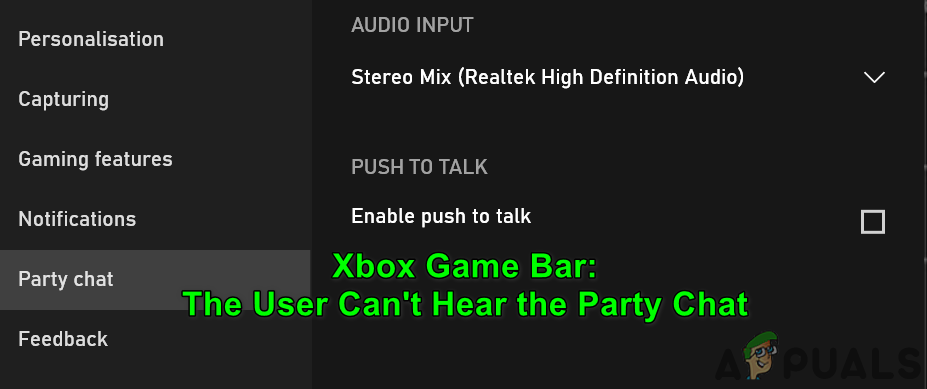
Before diving into the solutions, try the following preliminary checks:
- Unplug & replug your headset while in a party chat to see if the issue resolves.
- Terminate Xbox Game Bar processes via Task Manager.
- Restart your PC/router.
- Ensure your microphone isn’t muted & confirm that Game Bar/game can access it.
- If part of Windows Insider Program, consider leaving it to see if that resolves the issue.
- Verify no Xbox account parental controls, privacy settings, new account creations, or age restrictions are blocking party chat use.
- If signed into an Xbox Console, try logging out.
- Play games in Windowed Fullscreen or Borderless mode and check if it helps.
- Lastly, test whether disabling your Firewall addresses the issue.
Solution 1: Repair the Xbox Game Bar Installation
Corrupt Game Bar install? Repair it to possibly fix the issue.
- Hit Windows key, select Settings > Apps, and expand Xbox Game Bar.
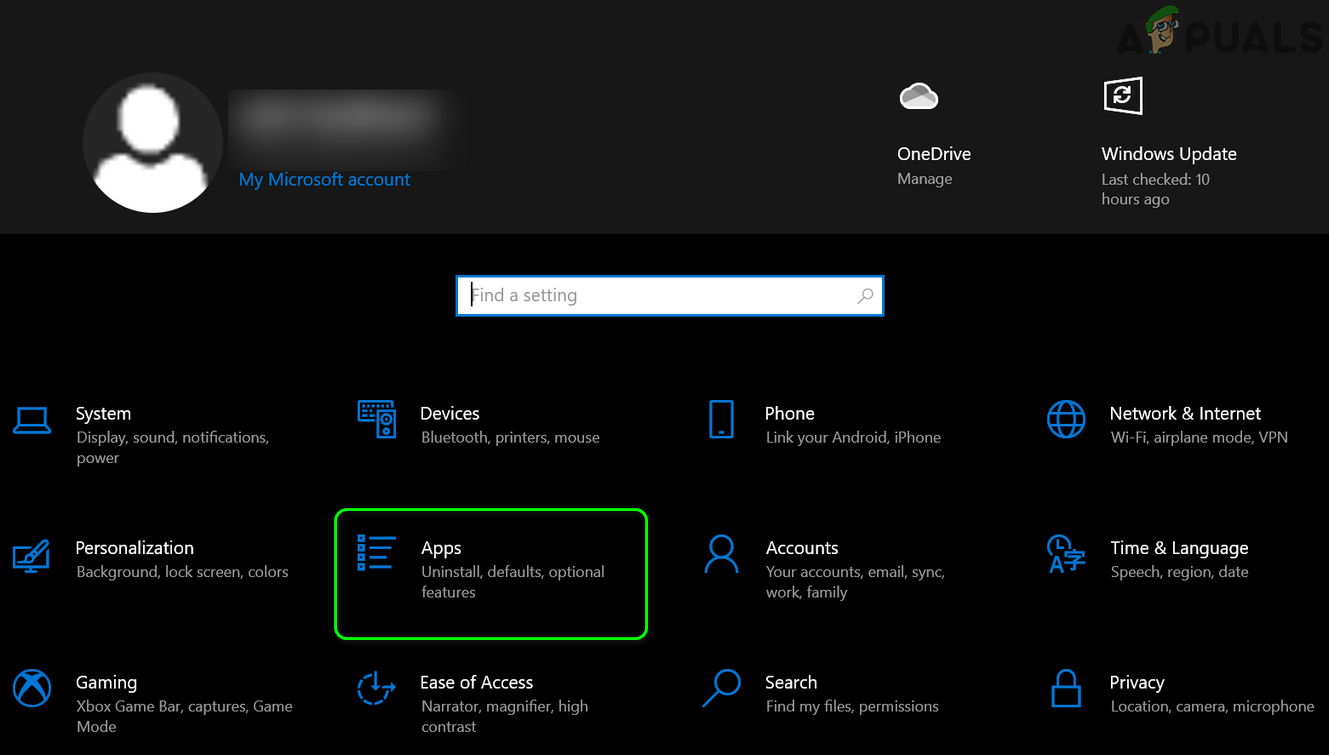
Open Apps in Settings - Open Advanced Options and click Terminate.

Open Advanced Options of Xbox Game Bar - Relaunch Xbox Game Bar to check if issue persists.
- If not resolved, repeat the above steps and hit the Repair button, then relaunch.
- Still unresolved? Repeat steps, but this time click Reset, note this will erase app data.

Terminate, Repair or Reset the Xbox Game Bar - Re-launch Game Bar to see if it’s functioning correctly.
Solution 2: Set the System’s Time Zone to Automatic
Incorrect system time zones can cause Xbox Game Bar issues by disrupting server-client sync.
- Right-click on clock to open Adjust Date/Time.
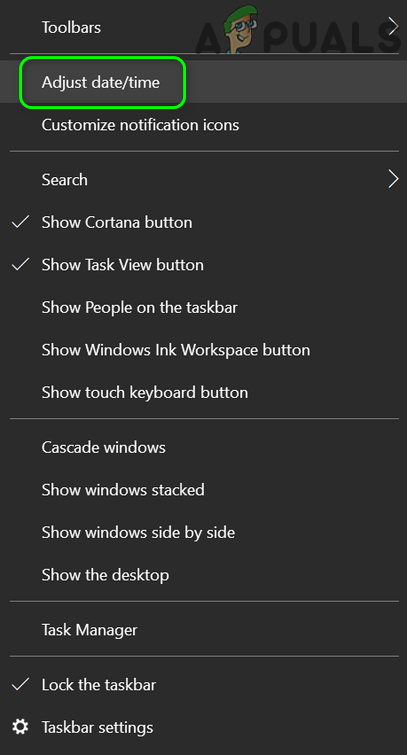
Open Adjust Date/Time - Toggle Set Time Zone Automatically off, set the correct one, then re-enable this option to check for problems.
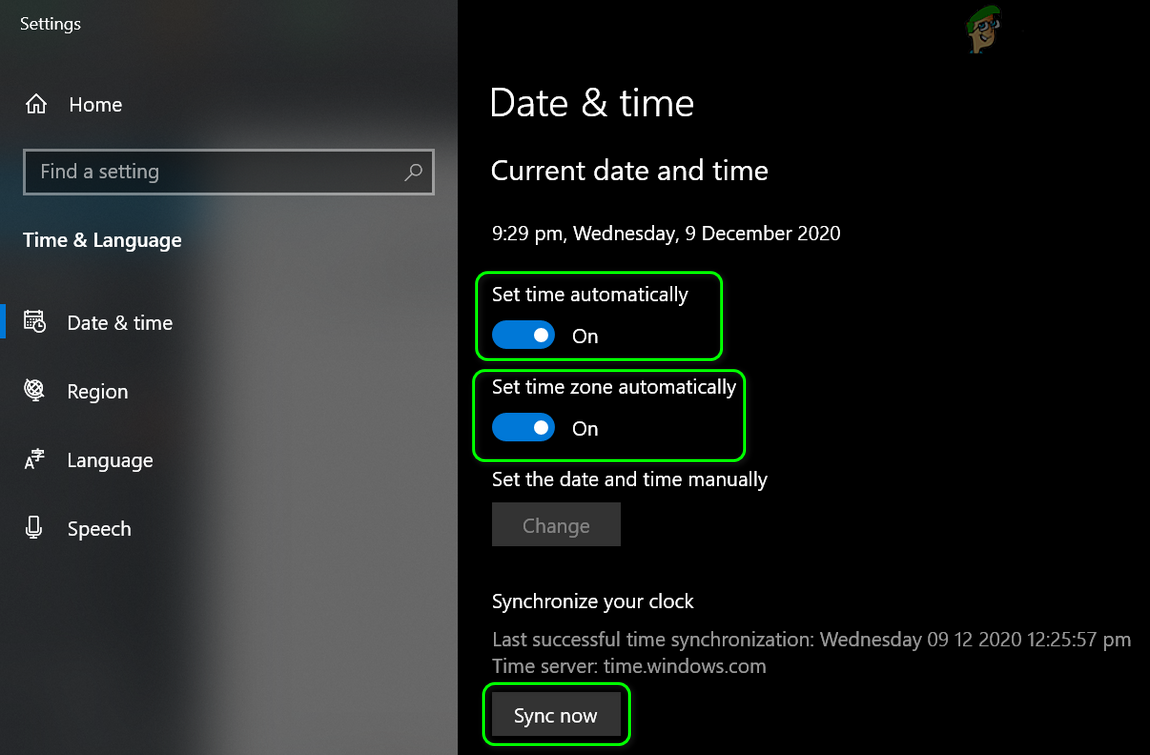
Enable Automatic Time/Time Zone and Sync Your Clock - Reboot your PC, then ensure ‘Set Time Automatically’ is on and click Sync Now. See if Xbox Game Bar’s issue is resolved.
Solution 3: Close/Uninstall Conflicting Applications
Certain applications might interfere with Xbox Game Bar’s performance. Razer Cortex and Blue Yeti device manager have been reported to do so.
- Boot your PC in Safe Mode or perform a clean boot to see if the issue persists.
- If fixed, exit applications such as Razer Cortex (ensure no related processes in Task Manager) then test Game Bar.
- If needed, try reinstalling Blue Yeti or similar applications along with their drivers. Post-installation, set Blue Yeti as the default device.
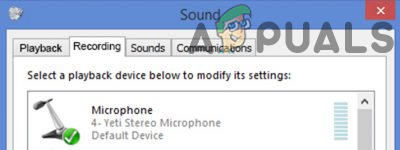
Remove Blue Yeti From Your System
Solution 4: Set Headset as Default Input/output Device
If your headset isn’t set as the audio output, you won’t hear party chat. Changing this setting might help.
- Press Windows key, go to Settings > System. Then in the left panel, click Sound.
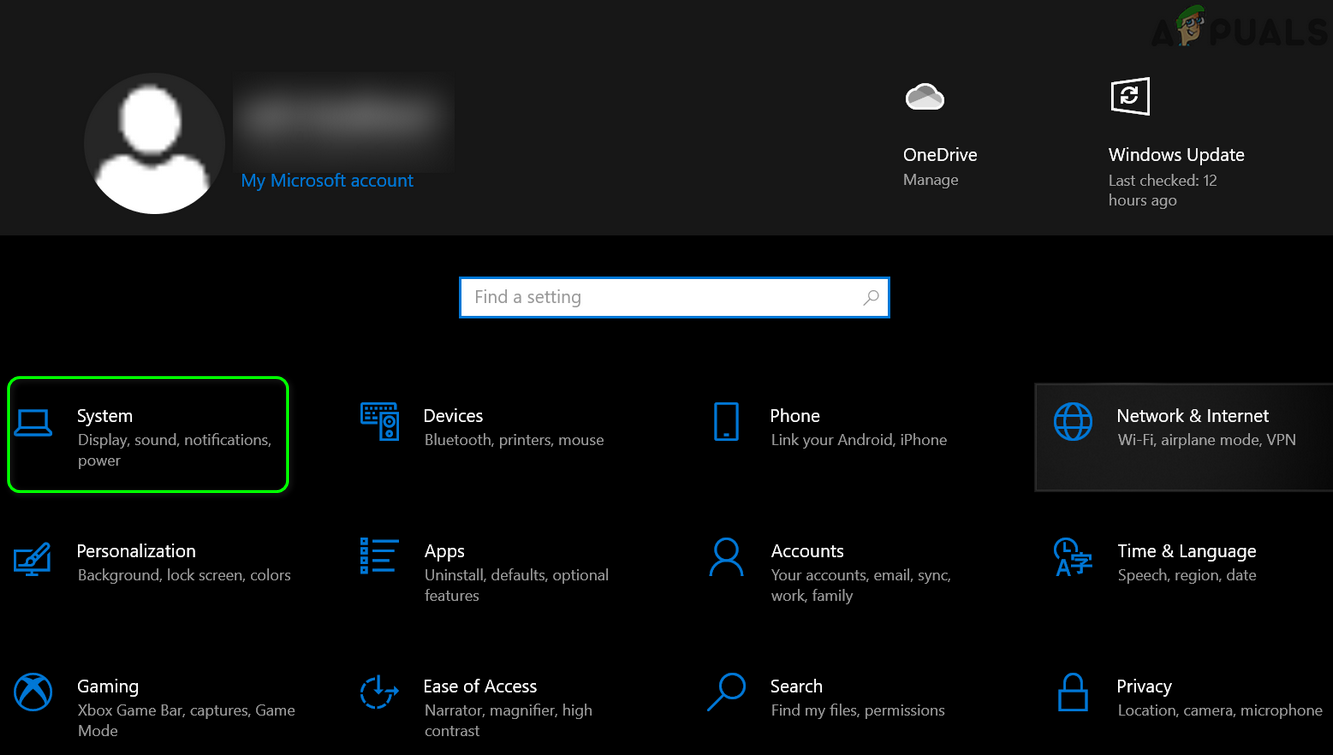
Open System in Windows Settings - Select Sound Control Panel on the right.
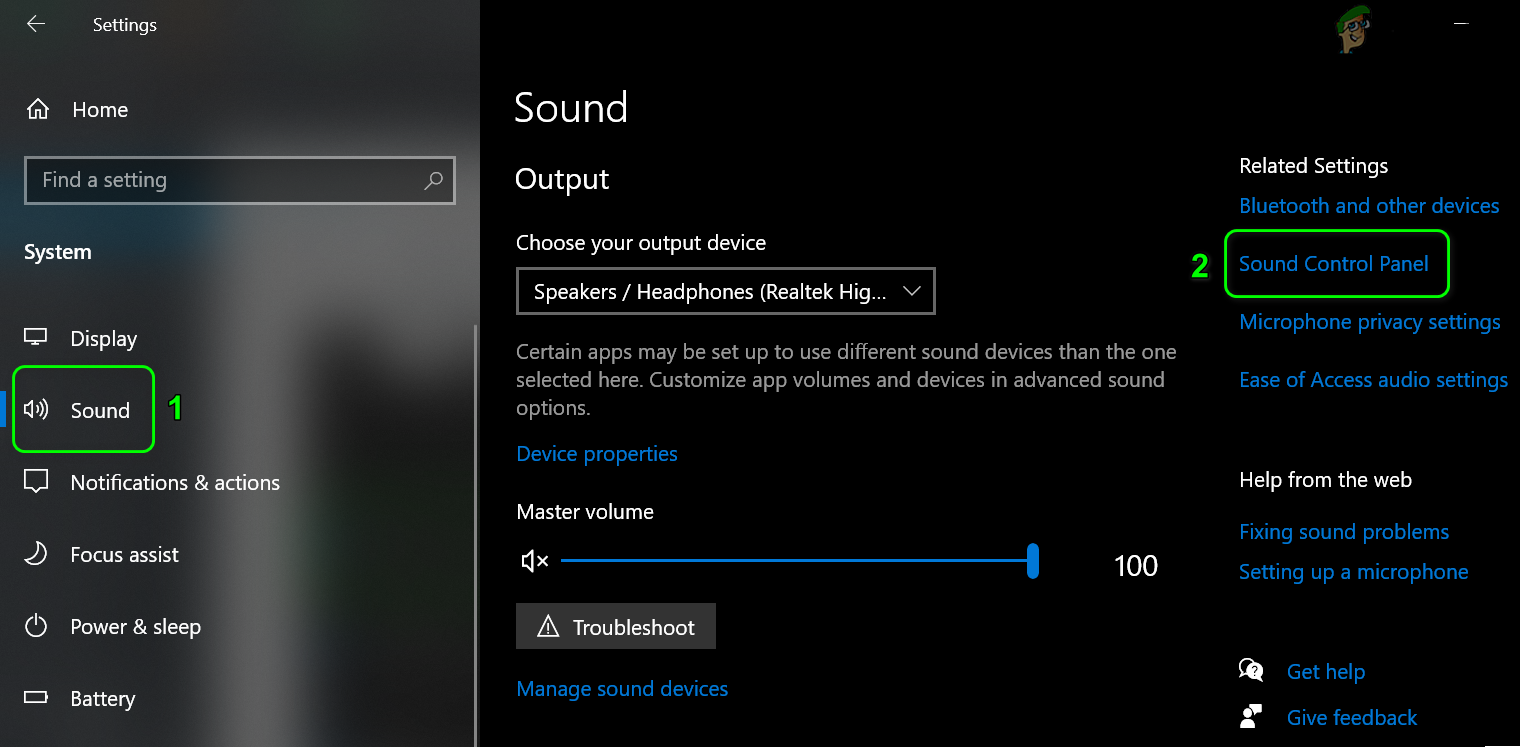
Open Sound Control Panel - In the Playback tab, test each device until the headset plays sound.
- Once identified, right-click on your headset device and select Set as Default Communication Device (if applicable).
- Also, set it as the Default Device.
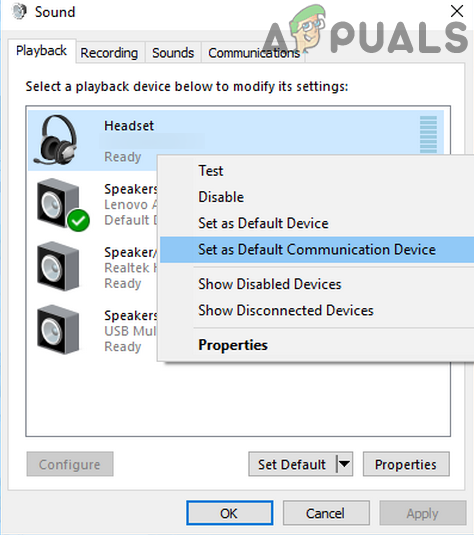
Set Your Headset as Default Communication and Default Device - Switch to the Recording tab and talk into your mic. Look for a device showing green bars when you speak.
- Set this device as both Default Communication and Default Device.
- Test if the issue with Game Bar is fixed.
- If not, revisit Playback tab, right-click on headset, select Properties > Advanced.
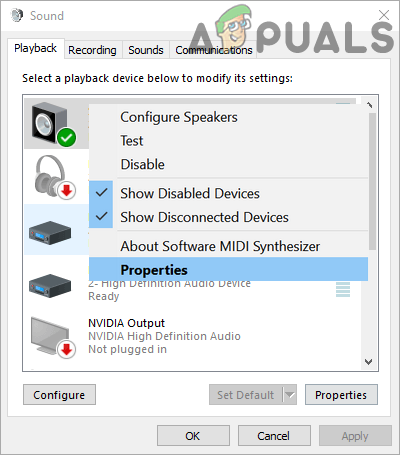
Open Properties of the Headset in the Playback tab - Uncheck ‘Allow Applications to Take Exclusive Control of This Device’.
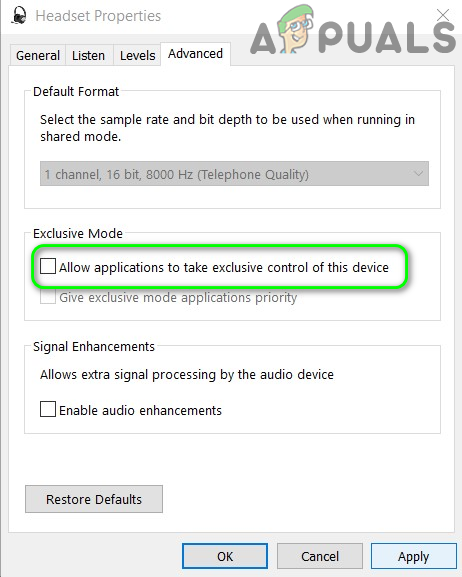
Uncheck Allow Applications to Take Exclusive Control of This Device - Apply/OK, then replicate for your headset device in Recording tab.
- Check now if Xbox Game Bar functions correctly.
Solution 5: Change Audio Input/Output Devices in Game Bar Settings
Xbox Game Bar might be directing audio to a non-headset device. Adjust settings accordingly.
- Access Xbox Game Bar, join/initiate a party (remain till end of steps).
- In Game Bar’s Gear icon settings, click Party Chat.
- Set Audio Output to headset (or switch it if it’s already on headset).
- Do the same for Audio Input, close Settings.

Set Input and Output Device in the Game Bar Settings - Select Widget Menu > Audio.
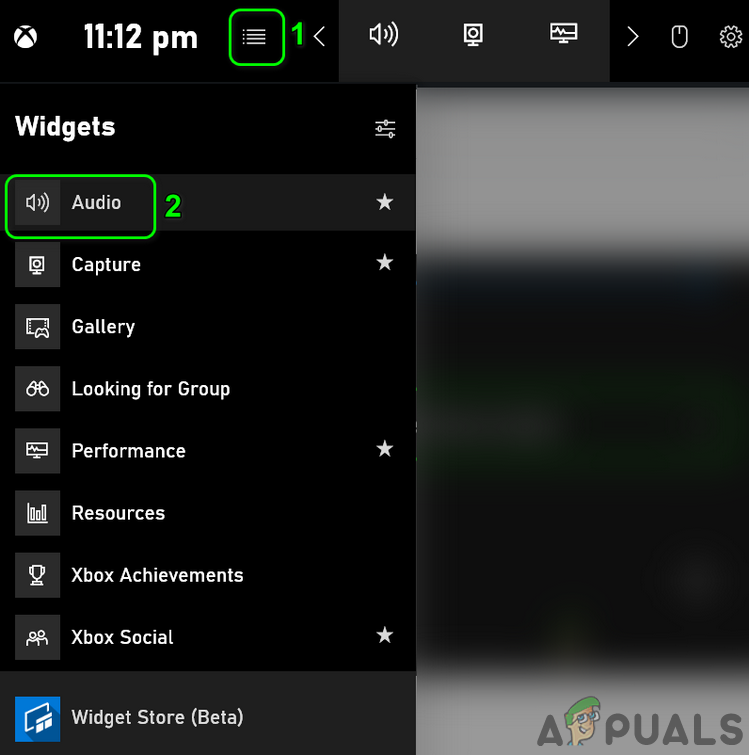
Open Audio in the Widget Menu of the Game Bar - Verify headset is selected in Mix and Voice tabs.

Set the Headset in Audio of Widget Menu - Revisit steps 2-4, confirm the headset is chosen as both output and input.
- Re-examine if party chat operates as expected.
- If unsuccessful, try turning off Push to Talk in Party Chat settings.
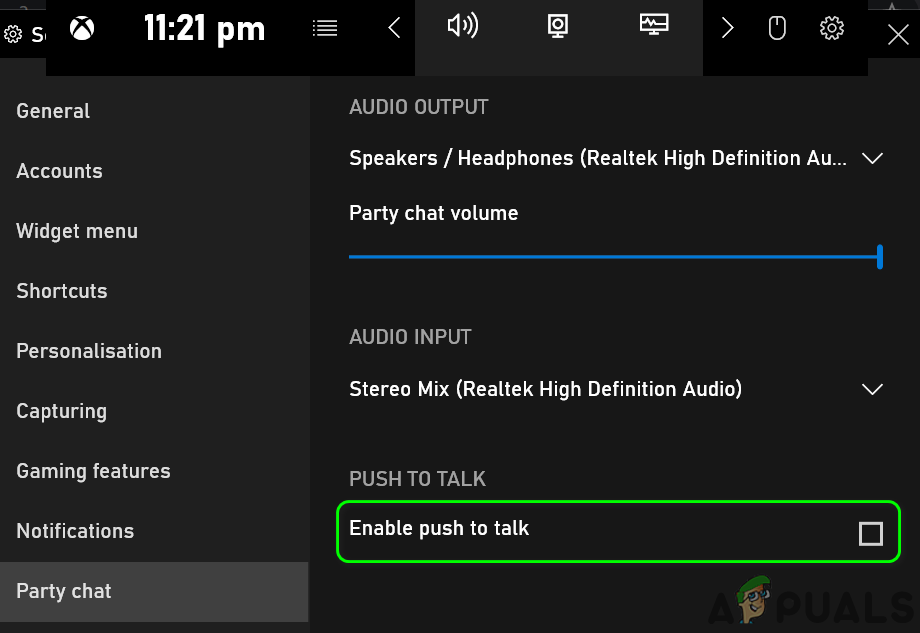
Disable Push To Talk in the Game Bar Settings
Solution 6: Update/Reinstall Network and Headset Drivers
Corrupted drivers might be at fault. Consider updating or reinstalling.
- Update system drivers and Windows to the latest build and check for issues.
- If problems persist, visit the manufacturer’s site and download the latest network and headset drivers for your system.
- Use Windows + X to open Quick Settings, pick Device Manager.
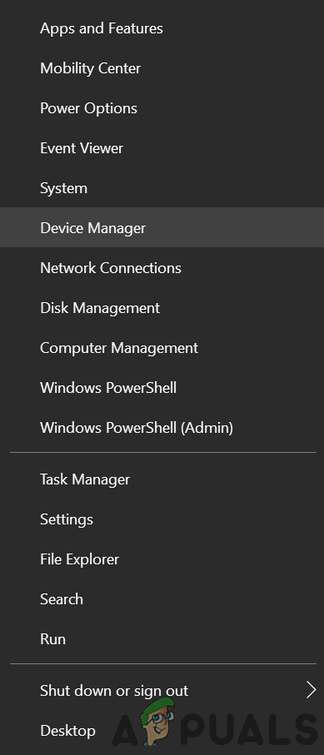
Open Device Manager - Uninstall the network adapter by right-clicking on it; check ‘Delete the driver software for this device’ when prompted.
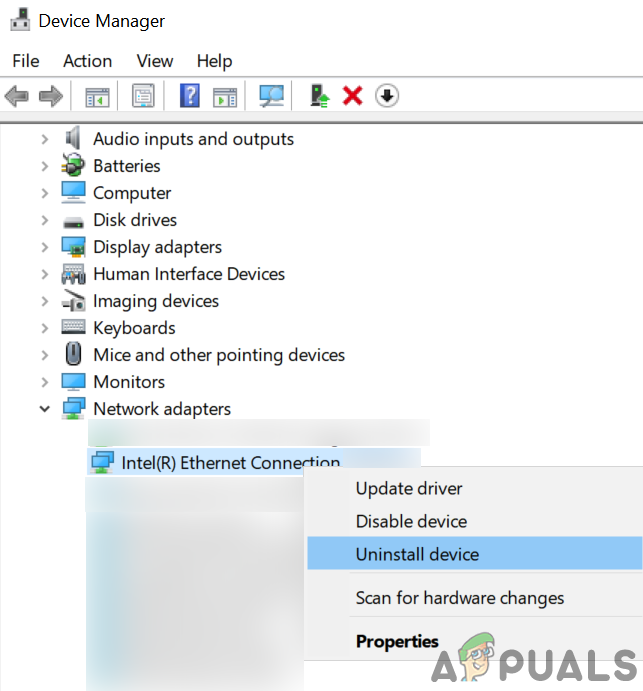
Uninstall the Network Adapter - Remove all network-related drivers and restart the PC.
- Upon reboot, reinstall network drivers then verify if the problem is fixed.
- If not, input ‘Services’ after pressing Windows key, choose it.
- Restart Windows Audio service by right-clicking on it.
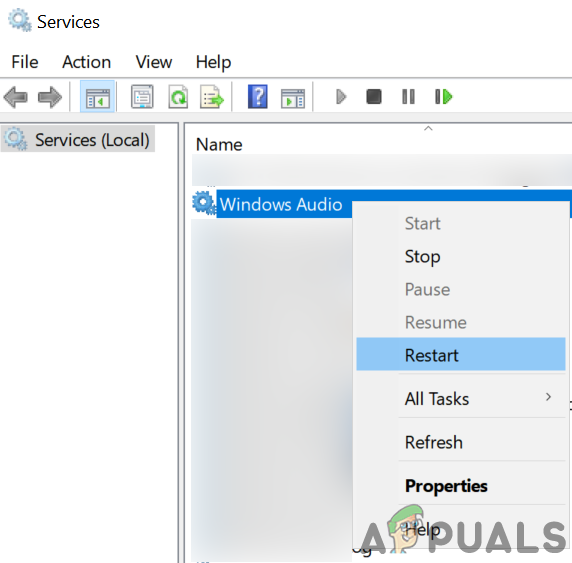
Restart the Audio Service - Test Xbox Game Bar once more.
- If unresolved, repeat steps 4-7 and reinstall your headset driver.
Solution 7: Change the NAT Type of Your Network
A non-open NAT type can impede Xbox Game Bar operation. Adjusting to an open NAT type might be the solution.
- Turn off IPV6 and see if the issue resolves.
- If not, press the Windows key, navigate to Settings > Gaming > Xbox Networking.
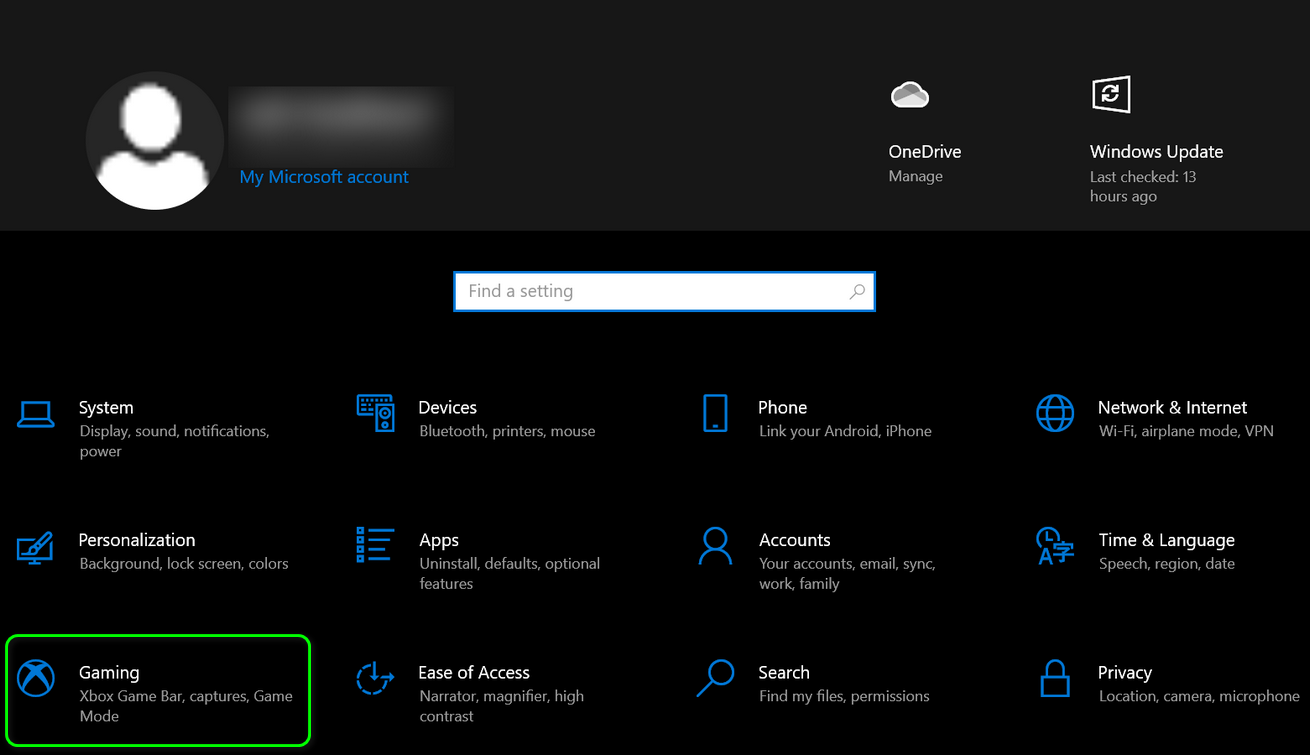
Open Gaming in the Windows Settings - Check NAT type. If ‘Teredo is Unable to Qualify’ or similar appears, click Fix it.

Fix the Xbox Networking - Test NAT type again. If open, see if party chat functions properly.
- Should NAT type still be restrictive, open Command Prompt as an Admin.

Open Command Prompt as Administrator - Execute the following commands:
netsh int teredo set state disable netsh int teredo set state type=default netsh int teredo set state enterpriseclient netsh int teredo set state servername=teredo.remlab.net
- If issue persists, consider manually changing NAT type to open.
If the problem continues, consider inviting players to a voice chat outside of Xbox party. If the issue affects only one game, attempt reinstalling or resetting that particular game. Additionally, if the new Xbox app (or Xbox Companion app) solves the problem, use that instead. If a Windows update initiated this concern, try rolling back the update. Should these actions fail, a clean Windows installation might be required. Lastly, testing with another router could also potentially address the issue.




